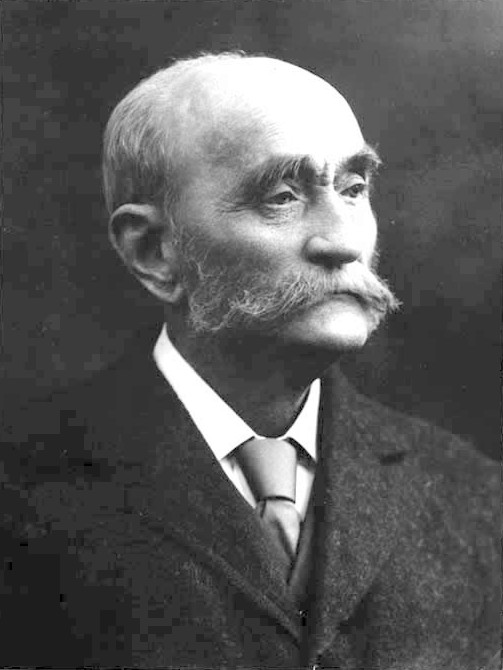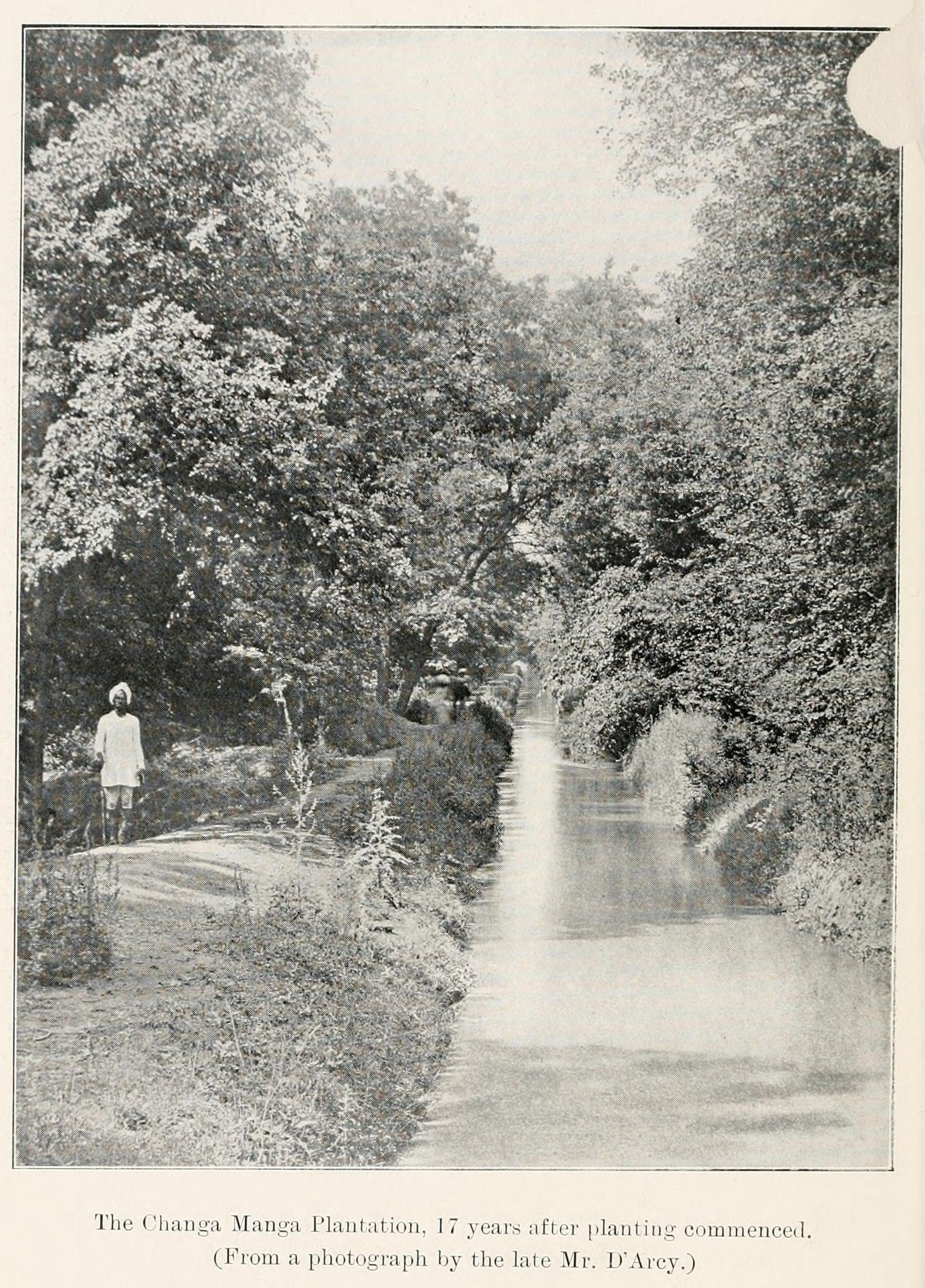Sustainable Forestry Science: Wilhelm Philip Daniel Schlich
April 2020 marks the 50th anniversary of Earth Day. Organizations around the world have commemorated the occasion by participating in the global Earth Optimism movement — an initiative spearheaded by the Smithsonian to “turn the conservation conversation from doom and gloom to optimism and opportunity”.
Throughout 2020, the Biodiversity Heritage Library (BHL) and our partners are joining the movement by sharing conservation success stories from and made possible by the BHL collection. Follow our blog for conservation stories — past and present — and visit our website for more information and to explore our Earth Optimism book collection.
———————

Wilhelm Schlich. Photo:![]() Public Domain. Wikimedia Commons.
Public Domain. Wikimedia Commons.
Wilhelm Philip Daniel Schlich (also known as William Schlich) was born on 28 February 1840 to a German pastor’s family. In 1859, he decided to study forestry, having previously studied mechanical engineering and mathematics. The change may have been inspired by Gustav Heyer, who taught forestry at the University of Giessen and under whom Schlich studied. After graduating in 1862, Schlich joined the Hesse forestry service, but unfortunately in 1866, he lost his employment due to territorial shifts after Prussia’s brief war against Austria.
At the same time, Dr. Dietrich Brandis, Inspector General of Forestry in the central government of British Raj, was looking for foresters to establish a technically competent forest administration service in India. Brandis is today considered the founder of tropical forestry.
India and Sustainable Forestry
Schlich followed Brandis to India, where he was employed at the focal points of the subcontinent’s forestry development: In 1867, he came to Burma as Special Assistant Conservator of Forests (ACF), where he was promoted to Deputy Conservator (DCF) after only six months. Schlich drew up personnel and economic plans and designed the further development possibilities for greater economic efficiency and higher profits. In 1870, he was transferred to the contrasting semi-desert climate of Sindh (Pakistan), where his success depended on the blessings of a regulated forestry industry for the population and the government revenue that the province would continue to receive.
His success led to his promotion in 1872 to the Conservator of Forests of Bengal. There he aroused the interest of the provincial governor Sir Richard Temple, who from then on strongly supported forestry. In 1873, the preparations for the founding of a forestry training centre in India were drafted, which led to the establishment of the Forest Ranger School in Dehradun in 1878—where Schlich himself headed the forestry department.
Schlich was also involved in the revision of the Forest Act of 1878, which divided the Indian forests into three groups: I. reserved forest (completely government controlled and protected), II. protected forest (partly government controlled) and III. village forests (controlled by abutting community). The majority of Indian forests were assigned to the first category and controlled first by the colonial government and then by the Government of India following Indian independence.

The Changa Manga Plantation. Before aforrestation. Source: Schlich, Wilhelm. Schlich’s Manual of Forestry v. 1 (1906), ed. 3. Contributed in BHL from NCSU Libraries via Internet Archive.

The Changa Manga Plantation. Seventeen years after planting. Source: Schlich, Wilhelm. Schlich’s Manual of Forestry v. 1 (1906), ed. 3. Contributed in BHL from NCSU Libraries via Internet Archive.
During this time, Schlich held landmark lectures at the Indian Forest Conference in Allahabad. He not only referred to the economic aspects of forestry, but also emphasized that forests “… increase the artistic beauty of a country, may, under certain conditions, increase its healthiness, and at any rate have a beneficial effect upon the human mind” (Schlich’s Manual of Forestry, 22).
Another result of this conference was the founding of the first forestry journal in the English-speaking world—the Indian Forester—with Schlich as its editor (until 1879).
In 1880, Schlich was assigned Conservator of Forests of Punjab, and by the end of 1881, he was appointed to the central government as Officiating Inspector General of Forests.
“It is not too much to say that the development of economic forestry in the British Empire generally has come through India. It is that country which has set the example. There can be no doubt that the development of systematic economic forest management in British India is something to be proud of” (Schlich’s Manual of Forestry, 118).
Great Britain & the Acknowledgement of Forestry as a Science
In 1885, Schlich left India for an appointment as Professor of Forestry at the Royal Indian Engineering College at Cooper’s Hill and was thus under the direct influence of the junior staff of the higher forestry service in India. Now he began to pursue his second major goal: The recognition of forestry studies as a scientific discipline at an English university.
In his lessons, Schlich always emphasized the importance of preserving the productive power of the soil as a silvicultural objective and thus created an understanding of sustainable forestry among his approximately 200 students, who passed this on to their later positions in science and administration.

Wilhelm Schlich (center, first row with pale hat on his lap) with Oxford students during a tour to saxony in 1892. Photo: ![]() Public Domain, Wikimedia Commons.
Public Domain, Wikimedia Commons.
The Manual of Forestry

Cover. Schlich, Wilhelm. Schlich’s Manual of Forestry v. 1 (1922), ed. 4. Contributed in BHL from University of Toronto – Robarts Library.
During his teaching activities, Schlich produced the 5-volume Manual of Forestry (first published between 1889–96) in which he concentrated his knowledge and designed it as a textbook for his students.
- Forest Policy in the British Empire
- Formation and Tending of Woods or Practical Sylviculture
- Forest Management
- Forest Protection (by W. R. Fisher, BA.) , English Adaption of „Der Forstschutz“ von Richard Heß
- Forest Utilization (by W. R. Fisher, BA.) , English Adaption of „Die Forstbenutzung“ von Karl Gayer
In this work, Schlich takes a holistic view of forestry work and addresses the climatological, pedological and plant-physiological factors that have an impact. Schlich’s principles pay attention to the balance of forest treatment without neglecting economic efficiency. The manual introduces the teaching of sustainable forest use in forestry studies and has become a standard textbook in the USA, among other countries.
In 1911, the University of Oxford offered Schlich a lectureship as professor of forestry. However, the lectureship was neither secured by a permanent chair nor by financial means, and forestry studies was by no means considered equal to the other scientific studies at that time. However, Schlich stuck to his goal, and when the lecture halls reopened in 1919 after WWI, students flocked to his lectures. The professorship was established by Oxford University as a permanent chair and financially secured. At the end of the year, Schlich ended his university teaching and ceded the chair to R. S. Troup.
Although retired, Schlich dedicated himself to the conservation of the forests in England and became involved in the Royal English Arboricultural to further develop the newly awakened interest in forestry. He remarked, however, that the societies and commissions talked too much and took too little actions.
Schlich died on 28 September 1925 in Oxford.
In recognition of his life’s work, Schlich became, in some cases posthumously, an honorary member of various forestry interest groups. In his honour, the Society of American Foresters awards the Sir William Schlich Memorial Medal, which was presented among others to Franklin D. Roosevelt, then President of the USA, for his services to forest conservation in the USA by founding and promoting the Civilian Conservation Corps.
Sources and Literature
Titles by Sir Wilhelm Schlich in the Biodiversity Heritage Library: https://www.biodiversitylibrary.org/creator/13760
Knopf, H. E. (1992). Forstliche Leitbilder: Leben und Werk von Philipp Engel von Klipstein, Richard Alexander Hess, Sir William Schlich. Göttingen: Vereinigung d. Freunde d. Fachbereichs Forstwirtschaft. http://www.worldcat.org/oclc/46119866.





Leave a Comment